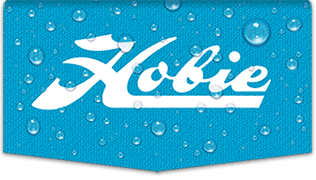The GT sprockets are missing from that list and you will also need two threaded masts and possibly fins.
The inside of the hull looks good. In fact, for its age, the boat doesn't show a lot of use (few scratches on the hull bottom) and I suspect your Drive may similarly show lack of care rather than extensive use. A good rough indicator of use on the Drive is to examine the drum adjustment pin holes. If one is elongated, that shows wear; if the adjustment pin has trouble seating in the next hole forward because of material displacement), that shows substantial wear. I'm guessing you have neither.
WAVERIDER made a very good point:
WAVERIDER wrote:
I got a 2006 adventure and went through the upgrades you are talking about.... Shortly after this the drive well cracked. Point being money spent on drive was wasted. Should have flogged it till it busted and then made the decision as whether to upgrade drive or new kayak.
There is the value of getting a good deal and there is the value of using your $ to get a new boat that will last longer,has all the latest gadgets and will hold its value much better than a new car!
IMO, there is no need to spend a lot of money on a new boat when you can have the same experience for a fraction of the price with used equipment. A good perusal of the "search" feature would show lots of tricks of the trade so to speak. For instance,
1. V-1 masts / sprockets have 2 problems a) the Allenhead retainer loosens, letting the mast slip down. b) Once loosened, the mast wobbles, wearing out the its formerly tight hole, eventually falling out and rendering the fin inoperable. The solution: Epoxy the screw and mast in place, making sure the screw is properly engaged in the locking flat spot. Problem solved -- this part is now fully reliable -- just keep an eye on it and use a good marine epoxy and it will not fail on you. Cost -- one package of epoxy.
2. Drums show wear on the drumshaft by wobbling. Solution -- do nothing. This will not fail and will not hurt your performance.
3. Drums show wear on a pedal adjustment hole. Ultimately this can breach to the next hole. Solution -- reverse the drums (swap sides). The drums are symmetrical and you will have an unused hole to start fresh. Reliability -- good as new. Cost -- $0. Solution b) remove the adjustment pins and thru-bolt the crank arm to the drum. Note : don't forget to swap the pedals back to their original side.
4. Shaft wear. The Drive has 3 shafts -- idler, drum and sprocket. All three wear, depending on use, lubrication, and over-tightening of the cables, BUT they only wear on one side. Solution -- if you're re-using old parts, don't worry about it; if you're upgrading, flip the shafts to get a brand new surface. Cost: $0
5. Cables are difficult to assess, but will often stretch before breaking. If you notice a cable loosening without the adjustment nut backing out, you may have a pending failure. Cables are expensive and I tend to replace them only when I see a probable failure or suffer a failure. It's not a big deal (see below).
6. The spine will not fail unless you break it. This is done by over-tightening the sprocket shaft lock screw or idler shaft screw. Tighten these only to snug and use Loctite Blue to prevent from backing out. Solution -- none necessary. Cost $0. Note -- newer spines have an alignment pin, which is not applicable to your boat -- must be removed. They also have a flange to keep the water from surging. There is a rubber add-on for older Drives that does the same thing. The new spines lose the pitot tube capability (sorely missed by me). So "upgrading" a spine unnecessarily is a waste of $ IMO.
7. Crank arms and pedals fail rarely and when they do, it is not age-related. Solution -- do nothing.
So there you have it -- a completely rebuilt Drive for the cost of a little epoxy and grease, almost as reliable as a completely rebuilt Drive with new parts. It's your choice.
Lets take a look at what constitutes a Drive failure (unable to continue using until repaired).
1. Loss of mast? Nope. The Drive functions on one fin just fine, although at reduced speed and with some boat rocking, but will still beat a paddle!
2. Broken cable? Nope. You can break any one cable and the Drive will still function. In fact, in an emergency you only need one chain / cable to operate the Drive (although you would have to insert the Drive in backwards in one scenario)..Highly unlikely to break 2 at once!
3. Broken pedal (rare)? Nope. Use the crank arm.
4. Broken crank (rare)? Yes -- use your paddle.
5. Severely bent front mast (from grounding)? Nope. Half strokes will get you home just fine.
For some reason, most users break the paddle out whenever a part fails. I can only imagine they like paddling because all this info is posted on the forum. Anyone having doubts should run a simulation to satisfy themselves that the Drive isn't so fragile after all!
I agree with WAVERIDER -- enjoy your boat, fix the things you need to without spending a lot of money and you should have a blast! When you decide to get a newer boat later, you should be able to recover your total investment and then some.














